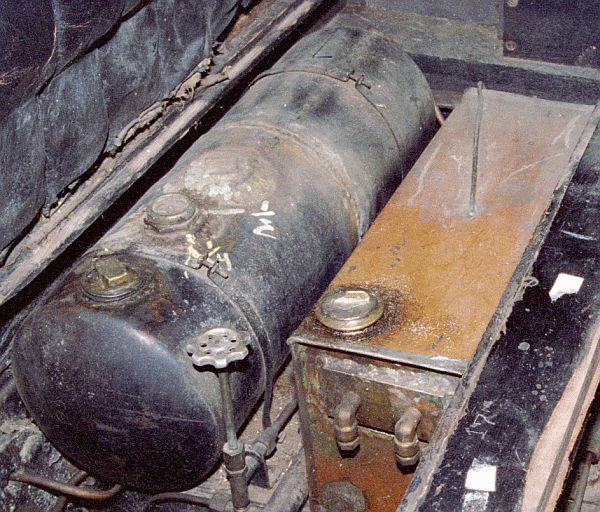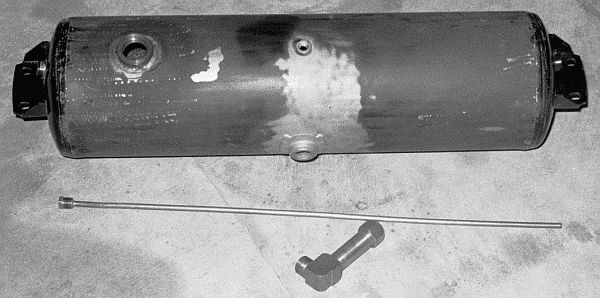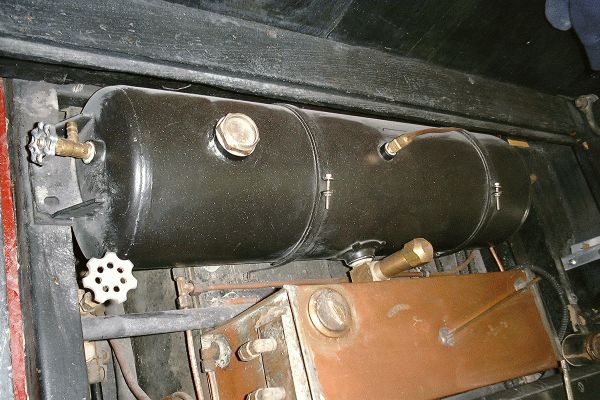|
The first tank replaced was the pilot fuel tank (shown above to the left ~ the copper tank is the steam cylinder oil tank). This tank holds about two gallons of gasoline pressurized at twenty to thirty pounds of pressure gauge. This tank must be pressurized to force the fuel to the pilot where it can be vaporized and then burned. The original tank had obviously leaked and developed other problems. It had been brazed and welded and the interior surfaces were well rusted. Just the appearance of this tank and the knowledge that it held highly flammable fuel under pressure was sufficient to decide it required replacement. The last thing needed would be a pinhole leak developing and a very fine spray of gasoline becoming ignited by the open flame a short distance away under the car. An ideal replacement tank was found in an air pressure reservoir tank for a tractor-trailer. The tank was the same diameter as the original but was slightly longer. An advantage was that it included welded mounting plates on its end that allowed it to rest on the carís steel channel frame as part of its mounting (the original tank was simply held in place on the wooden floorboards by two steel straps.
The mounting arrangement for the replacement pilot tank necessitated that its fill port be at the side of the tank instead of on top as was the case with the original tank. This is actually a benefit because the pilot tank should never be filled more than half to two-thirds full because an air space is required for pressurization. With the side-fill arrangement it becomes harder to overfill the tank. The original pilot tank fed fuel from a port at the bottom of the tank while the new tank had ports at either end at the top. One of these ports would become a pressure release that the original tank did not include. The original tank required that the fill plug be opened slightly to bleed down the internal tank pressure. An added valve on the replacement tank would make depressurization of the tank during filling a lot easier and perhaps safer. The remaining port was used to feed fuel from the tank using a dip-tube that extended to just off the bottom so that there was less likelihood of debris being sucked into the pilot fuel system from the tank.
A port in the center top of the tank was retained and used for the connection of the air line used to pressurize the tank. The air line runs from the top of the tank to the left valve of the pair of air pressurization valves located below the floorboards just behind the firewall. Only one port had to be added to the tank and that was for the level gauge. While the level gauge for the original tank was incomplete, part of it was still with the tank. In hopes of someday finding the parts necessary to restore the level indicator a hole was cut in the tank and a threaded insert added. |


